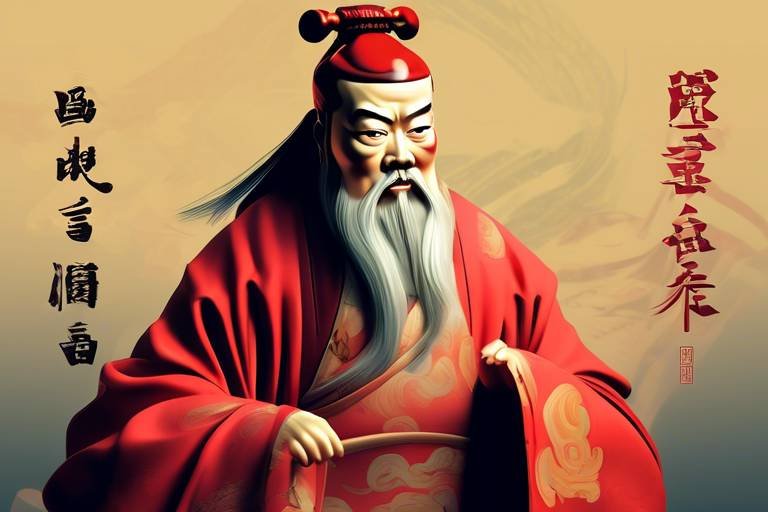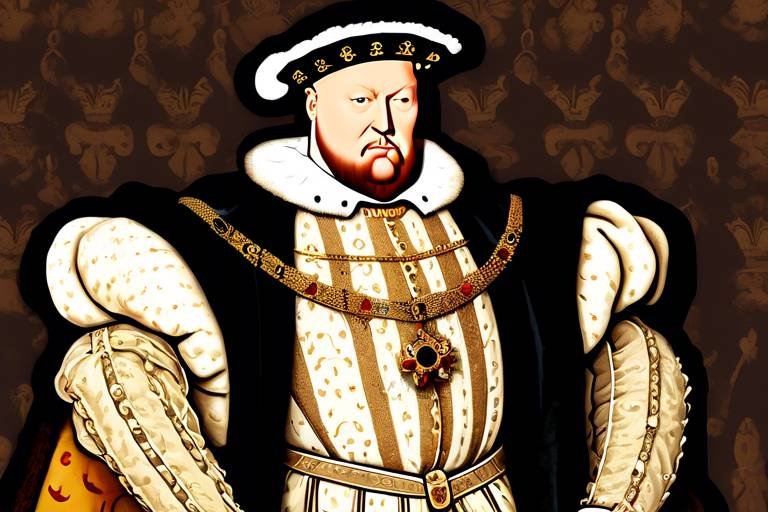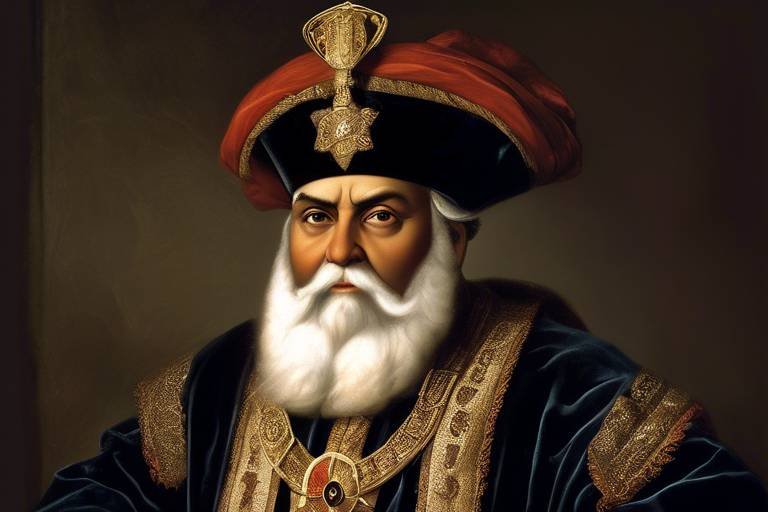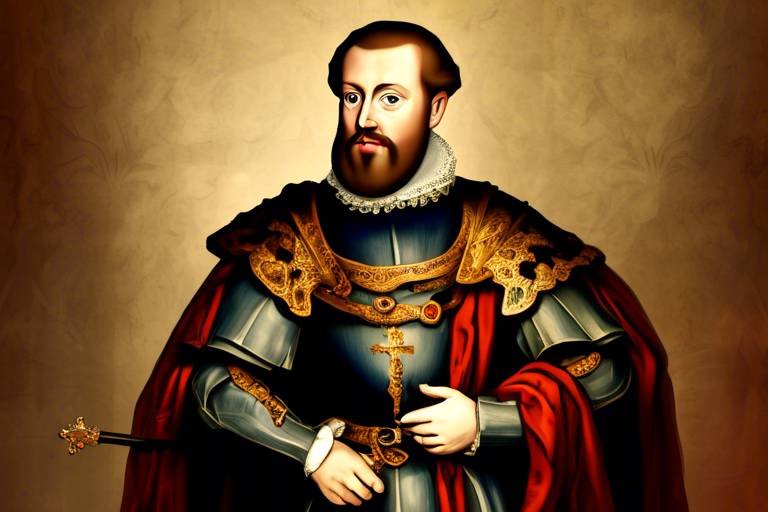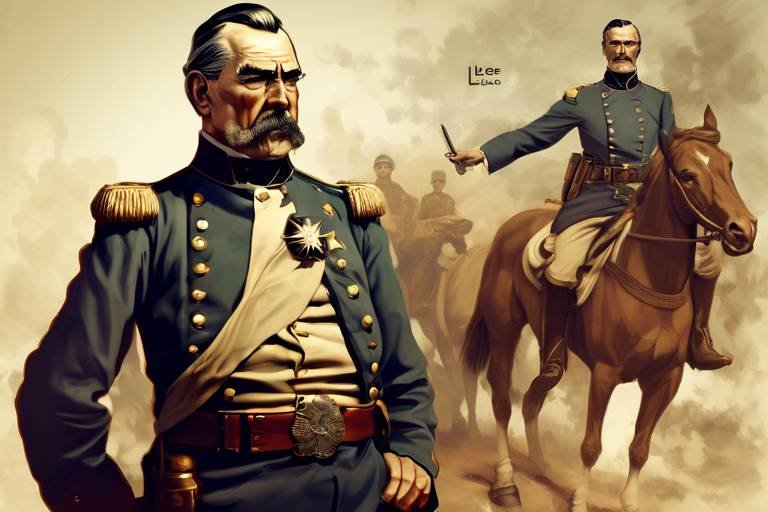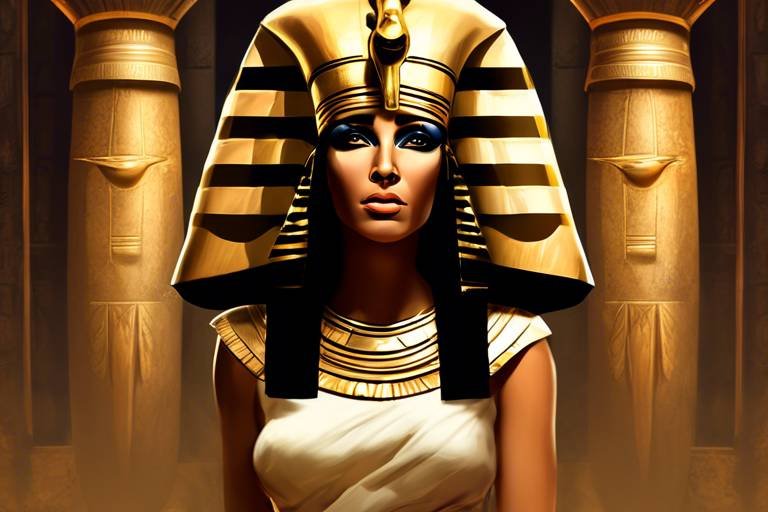Genghis Khan: Conqueror of the Mongol Empire
Genghis Khan, the legendary Mongol leader, is a figure shrouded in mystery and awe. Born into humble beginnings, he rose to power through sheer determination and strategic brilliance. His conquests reshaped the course of history, establishing one of the largest empires the world has ever seen.
From the vast steppes of Mongolia, Genghis Khan embarked on a journey that would change the face of the known world. Through a series of military campaigns and alliances, he united the fractious Mongol tribes under his rule, laying the foundation for a powerful empire that would stretch from Asia to Europe.
Known for his innovative military strategies and tactics, Genghis Khan revolutionized warfare and conquered vast territories with unmatched speed and efficiency. His armies, disciplined and highly organized, struck fear into the hearts of his enemies, leading to swift and decisive victories on the battlefield.
As the Mongol Empire expanded under his leadership, Genghis Khan oversaw the conquest of China, Central Asia, and the Middle East, bringing diverse cultures and peoples under his rule. His administration and governance were marked by effective systems that allowed the empire to flourish and prosper.
The cultural impact of Genghis Khan's empire was profound, leaving a lasting legacy on the regions it conquered. His influence extended far beyond his lifetime, shaping the course of history and influencing generations to come.
Despite his remarkable achievements, the decline of the Mongol Empire after Genghis Khan's death marked the end of an era. Successors struggled to maintain the unity and power he had wielded, leading to internal strife and external pressures that eventually led to the empire's fragmentation.
Today, Genghis Khan's legacy is a subject of historical controversies and modern perspectives. While some view him as a ruthless conqueror, others admire his military prowess and administrative skills. His impact on world history continues to be a topic of debate and fascination.
In popular culture, Genghis Khan is often depicted as a larger-than-life figure, inspiring works of literature, films, and art. His influence on modern perceptions of history and leadership is undeniable, cementing his place as one of the most iconic figures in human civilization.
- Was Genghis Khan a ruthless conqueror?
- What were Genghis Khan's military strategies?
- How did Genghis Khan impact the regions he conquered?
- What led to the decline of the Mongol Empire after Genghis Khan's death?
- How is Genghis Khan portrayed in popular culture?

Early Life and Rise to Power
Exploring the life and conquests of Genghis Khan, the renowned Mongol leader who established one of the largest empires in history through military campaigns and strategic leadership.
Genghis Khan, originally named Temüjin, was born into a nomadic tribe in the harsh lands of Mongolia in 1162. His early life was marked by adversity and turmoil as his father was poisoned, leaving the family destitute and vulnerable. Temüjin, even at a young age, displayed remarkable leadership qualities, rallying his tribe and forming alliances to survive the harsh realities of the Mongolian steppes. Through a series of strategic marriages and alliances, Temüjin gradually consolidated power, earning the title of Genghis Khan, meaning "universal ruler," in 1206.
As Genghis Khan rose to power, he implemented a strict code of laws and meritocracy within his tribe, rewarding loyalty and skill regardless of social status. This egalitarian approach to leadership set him apart from traditional Mongol chieftains and garnered him widespread support among the Mongol tribes, eventually leading to his unification of the warring factions under his rule.
His rise to power was not without challenges, as rival tribes and external threats constantly tested his leadership. However, Genghis Khan's military prowess and strategic acumen allowed him to overcome these obstacles, solidifying his position as the undisputed ruler of the Mongol tribes.
Through a combination of charisma, military skill, and political cunning, Genghis Khan transformed himself from an orphaned outcast into the formidable leader of a united Mongol confederation, laying the foundation for his ambitious conquests and the establishment of the vast Mongol Empire.

Military Strategies and Tactics
Genghis Khan, the legendary conqueror of the Mongol Empire, was not only a skilled military leader but also a master strategist. His military strategies and tactics were instrumental in the rapid expansion of his empire across vast territories.
One of Genghis Khan's most notable military strategies was his effective use of cavalry. The Mongol army was renowned for its superior cavalry units, which allowed for swift and mobile warfare. By utilizing skilled horsemen armed with bows, the Mongols could launch surprise attacks and retreat quickly, leaving their enemies bewildered and unable to mount a proper defense.
In addition to their prowess on horseback, Genghis Khan's forces were also adept at siege warfare. The Mongols developed innovative siege tactics, such as using siege engines and employing psychological warfare to demoralize their opponents. This combination of brute force and psychological pressure often led to quick victories and the submission of fortified cities.
Furthermore, Genghis Khan was a master of strategic deception. He frequently employed feints and diversionary tactics to mislead his enemies and lure them into traps. By keeping his opponents off balance and uncertain of his true intentions, Genghis Khan was able to outmaneuver larger and more well-equipped armies.
Another key aspect of Genghis Khan's military strategy was his ability to adapt to different terrains and environments. Whether fighting in the steppes of Central Asia or the rugged mountains of the Caucasus, the Mongol army was able to adjust its tactics and techniques to suit the conditions of the battlefield. This flexibility gave them a significant advantage over less adaptable foes.
Moreover, Genghis Khan was a firm believer in the importance of intelligence gathering and reconnaissance. He established a sophisticated spy network that provided him with valuable information about his enemies' strengths, weaknesses, and movements. This intelligence allowed Genghis Khan to make informed decisions and plan his military campaigns with precision.
In conclusion, Genghis Khan's military strategies and tactics were characterized by innovation, adaptability, and strategic brilliance. His ability to combine speed, surprise, and psychological warfare made him a formidable foe and enabled him to build one of the largest empires in history through conquest and sheer military prowess.

Expansion of the Empire
During Genghis Khan's reign, the Mongol Empire experienced a remarkable expansion that reshaped the geopolitical landscape of the 13th century world. With unmatched military prowess and strategic vision, Genghis Khan led his armies to conquer vast territories, spreading the influence of the Mongol Empire far and wide. The expansion of the empire was not merely about territorial conquest but also about establishing control over diverse regions and populations.
One of the key factors contributing to the rapid expansion of the Mongol Empire was Genghis Khan's innovative military strategies. He revolutionized warfare by incorporating tactics such as swift cavalry attacks, psychological warfare, and the effective use of intelligence gathering. These tactics allowed the Mongol armies to outmaneuver and overwhelm their opponents, leading to swift victories and the consolidation of power.
Moreover, Genghis Khan's leadership style played a crucial role in the empire's expansion. His ability to inspire loyalty among his warriors, delegate authority effectively, and adapt to changing circumstances on the battlefield set him apart as a military genius. Under his command, the Mongol forces were able to overcome formidable obstacles and expand the empire across vast stretches of land.
The conquests under Genghis Khan's leadership extended from China in the east to Central Asia and the Middle East in the west. The Mongol Empire's reach encompassed diverse cultures, languages, and traditions, creating a melting pot of influences under Mongol rule. Genghis Khan's strategic vision and relentless pursuit of expansion laid the foundation for the empire's formidable presence in the medieval world.
As the Mongol Empire expanded, it brought about significant cultural exchanges and transformations. The integration of diverse societies under Mongol rule facilitated the exchange of ideas, technologies, and goods, leading to a period of unprecedented cultural flourishing. The empire's vast network of trade routes, known as the Silk Road, facilitated the exchange of goods and knowledge between East and West, further solidifying the Mongols' influence on global trade and communication.

Administration and Governance
When it comes to Administration and Governance, Genghis Khan was not only a formidable military leader but also a visionary ruler who implemented effective systems to govern his vast empire. He established a structured administration that allowed for efficient rule over the diverse territories under his control. Genghis Khan divided his empire into ulus, or districts, each governed by trusted officials known as darughachi. These officials were responsible for collecting taxes, maintaining order, and enforcing laws within their respective ulus.
Furthermore, Genghis Khan introduced a merit-based system for appointing officials, prioritizing competence and loyalty over noble lineage. This approach ensured that capable individuals were placed in positions of power, contributing to the stability and effectiveness of his administration. The Great Khan also implemented a sophisticated communication network using yam, or relay stations, to facilitate the swift transmission of messages and decrees across the empire.
In terms of governance, Genghis Khan promoted religious tolerance and allowed his subjects to practice their faith freely. He respected the customs and traditions of the diverse ethnic groups within his empire, fostering a sense of unity and cooperation among the different populations. Additionally, he established a legal code known as the Yassa, which outlined rules for behavior, governance, and military conduct. The Yassa served as a unifying set of laws that applied to all subjects of the Mongol Empire.

Cultural Impact and Legacy
When delving into the of Genghis Khan, one cannot overlook the profound influence his empire had on the regions it conquered. The Mongol Empire, under Khan's leadership, not only expanded territorially but also facilitated cultural exchanges and interactions across vast distances. This led to the dissemination of ideas, technologies, and traditions, shaping the societies of Eurasia in ways that endure to this day.
One remarkable aspect of Genghis Khan's legacy is the promotion of trade and communication along the Silk Road. By securing trade routes and encouraging commerce, the Mongol Empire facilitated the exchange of goods, knowledge, and cultures between East and West. This interconnectedness fostered a rich tapestry of cross-cultural interactions, influencing art, architecture, language, and even culinary traditions in the regions under Mongol rule.
Moreover, Genghis Khan's administrative reforms and tolerance towards diverse ethnicities and religions left a lasting imprint on the governance structures of his empire. The establishment of a meritocratic system based on talent rather than lineage allowed individuals from various backgrounds to rise to positions of power, fostering a sense of inclusivity and unity within the empire.
The legacy of Genghis Khan extends beyond his military conquests; it encompasses the enduring impact of his empire on the development of civilizations in Eurasia. The Mongol Empire served as a bridge between different cultures, fostering an exchange of ideas that laid the foundation for future advancements in science, technology, and governance.

Successors and the Decline of the Empire
After the death of Genghis Khan in 1227, his empire was divided among his sons and grandsons, each taking control of different territories. The empire was split into four khanates: the Yuan dynasty in China, the Ilkhanate in Persia, the Chagatai Khanate in Central Asia, and the Golden Horde in Russia. This division weakened the unity of the empire as conflicts arose among the successors over territorial control and leadership.
Despite initial attempts to maintain the empire's vast territories, internal power struggles, succession disputes, and external invasions eventually led to the decline of the Mongol Empire. The lack of a centralized leadership after Genghis Khan's death contributed to the fragmentation of the empire, making it difficult to sustain the conquests and administrative systems established by the Great Khan.
The successors of Genghis Khan faced challenges in maintaining the military prowess and unity that characterized the empire under his rule. The constant infighting among the descendants of Genghis Khan weakened the empire's ability to defend its borders and effectively govern the vast territories under its control.
Furthermore, external threats such as the rise of powerful neighboring states, rebellions within conquered territories, and the spread of diseases like the Black Death hastened the decline of the Mongol Empire. The once mighty empire that stretched from Asia to Europe gradually disintegrated, with each khanate eventually breaking away to form independent states.

Historical Controversies and Modern Perspectives
Historical Controversies and Modern Perspectives surrounding Genghis Khan have sparked debates among historians and scholars for centuries. One of the most contentious issues is the portrayal of Genghis Khan as a ruthless conqueror versus a visionary leader. While some view him as a brutal warrior who caused immense destruction during his military campaigns, others argue that he was a strategic genius who brought stability and prosperity to the regions he conquered.
Additionally, there is ongoing debate about the impact of Genghis Khan's empire on the cultures and societies it engulfed. Some believe that the Mongol Empire brought about cultural exchange and economic growth, while others criticize the empire for its brutal methods of conquest and subjugation of indigenous populations.
Modern perspectives on Genghis Khan often highlight his military prowess and ability to unite diverse tribes under a single banner. His leadership style, characterized by meritocracy and tolerance of different religions and cultures, has garnered admiration from many contemporary scholars.
Furthermore, the legacy of Genghis Khan in the modern world is a topic of fascination and intrigue. His influence can be seen in various aspects of popular culture, from movies and literature to video games and music. The enduring fascination with Genghis Khan reflects a continued interest in his complex persona and the impact he had on shaping world history.

Pop Culture Depictions and Influence
Pop culture has long been fascinated by the enigmatic figure of Genghis Khan, portraying him in various forms across literature, films, and other media. His influence transcends time, with modern depictions often highlighting his military prowess and strategic genius. In movies like "Mongol" and "Genghis Khan," audiences are drawn into the world of conquests and power struggles that defined his reign. These portrayals often emphasize his larger-than-life persona and the impact he had on shaping the course of history.
Moreover, Genghis Khan's influence extends beyond entertainment and into the realms of literature and art. Authors and artists have drawn inspiration from his story, weaving tales of conquest and ambition that continue to captivate audiences. His legacy as a conqueror and empire builder has left an indelible mark on global culture, with his name evoking both fear and admiration in equal measure.
Furthermore, Genghis Khan's portrayal in pop culture reflects the enduring fascination with figures who defy conventional norms and forge their destinies through sheer willpower. His image as a ruthless yet visionary leader has become a symbol of power and ambition, resonating with audiences seeking stories of triumph against all odds.
Frequently Asked Questions
- Who was Genghis Khan?
Genghis Khan, born as Temüjin, was a legendary Mongol leader who founded the Mongol Empire and is known for his military conquests and strategic leadership.
- What were Genghis Khan's early life and rise to power like?
Genghis Khan started from humble beginnings, facing numerous challenges, but eventually emerged as a powerful leader who united the Mongol tribes under his rule.
- What were some of the military strategies and tactics employed by Genghis Khan?
Genghis Khan utilized innovative military tactics such as swift cavalry attacks, psychological warfare, and strategic alliances to conquer vast territories and establish the Mongol Empire.
- How did Genghis Khan expand the Mongol Empire?
Genghis Khan led relentless military campaigns that expanded the Mongol Empire across China, Central Asia, and the Middle East, creating one of the largest empires in history.
- What was Genghis Khan's cultural impact and legacy?
Genghis Khan's empire left a lasting cultural impact on the regions it conquered, and his legacy as a skilled military leader and empire builder continues to be studied in history.
- What led to the decline of the Mongol Empire after Genghis Khan's death?
After Genghis Khan's death, internal conflicts, succession disputes, and external pressures contributed to the eventual decline of the Mongol Empire.
- How is Genghis Khan depicted in popular culture?
Genghis Khan is often portrayed in literature, films, and other media as a fierce conqueror, shaping modern perceptions of him as a significant historical figure.




